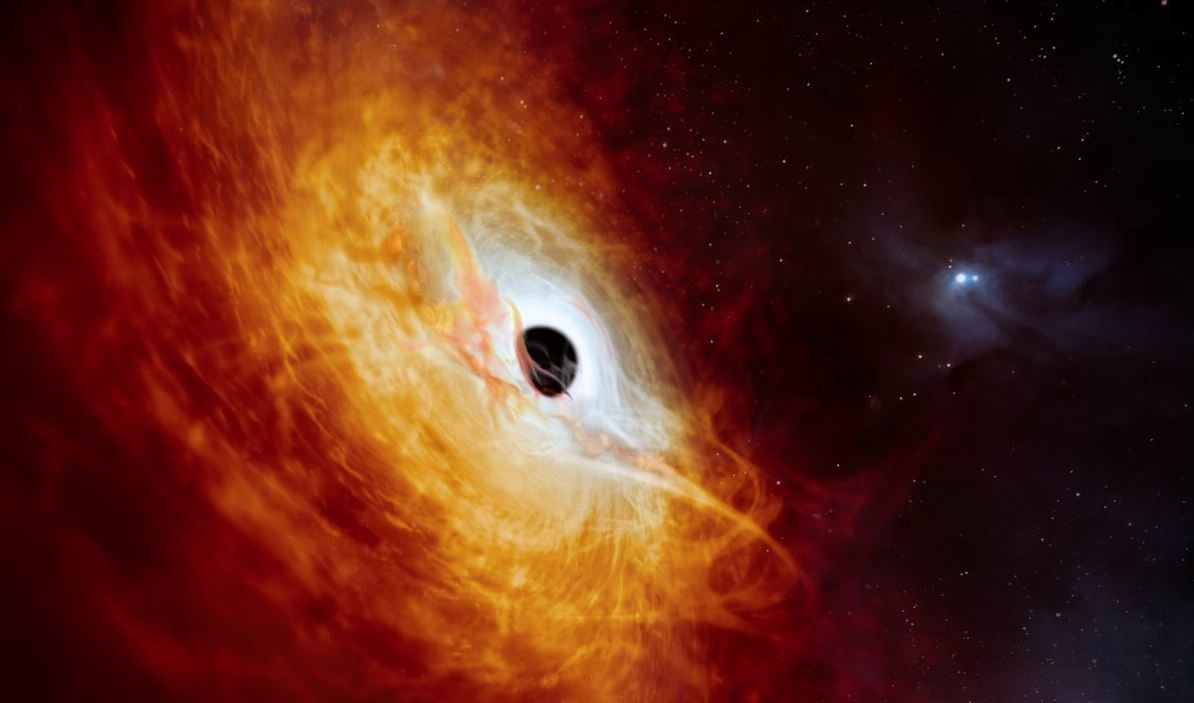Quasars are the bright cores of distant galaxies and get their energy from supermassive black holes. The European Southern Observatory, which operates the spacecraft, said in a statement that the black hole of this record-breaking quasar is increasing in mass by the equivalent of one sun per day, making it the fastest-growing black hole ever discovered. . telescope.
The black holes that power quasars collect matter from their surroundings in a process so active that they emit large amounts of light. Quasars are some of the brightest objects in our sky, which means that even the farthest objects can be seen from Earth. As a general rule, brighter quasars indicate the presence of faster-growing supermassive black holes.
“We have discovered the fastest-growing black hole known to date. It has a mass of 17 billion suns and eats just over one sun per day. This makes it the brightest object in the known universe,” says Christian Wolff, an astronomer at the center. Australian National University (ANU) and lead author of the study published in the journal Nature Astronomy. The quasar, called J0529-4351, is so far from Earth that its light takes more than 12 billion years to reach us.
The matter attracted to this disc-shaped black hole emits so much energy that J0529-4351 is larger than… 500 billion times brighter than the Sun. “All of this light is coming from a hot accretion disk seven light-years in diameter. This will be the largest accretion disk in the universe,” said Samuel Lai, a doctoral student at the Australian National University and co-author of the study. Years are about 15,000 times the distance from the Sun to Neptune's orbit.
Mistaken for a star
Surprisingly, this record-breaking quasar was hiding in plain sight. “It's a surprise that it hasn't been discovered until today, when we already know about a million less impressive quasars. It's literally been in front of us until now,” says co-author Christopher Onken, an astronomer at the Australian National University. The discovery also confirms that this object appeared in images from the European Southern Observatory's Schmidt Southern Sky Survey dating back to 1980, but was only identified as a quasar decades later.
Searching for quasars requires precise observational data from large areas of the sky. The resulting data sets are so large that researchers often use model learning to analyze them and distinguish quasars from other celestial objects. However, these models are trained using existing data, which limits potential candidates to things similar to those already known. If the new quasar is brighter than any previously observed quasar, the program may reject it and classify it as a star not very far from Earth.
Automated analysis of data from the European Space Agency's Gaia satellite found that J0529-4351 was too bright to be considered a quasar, suggesting that it was a star. Researchers identified it as a distant quasar last year using observations from the 2.3-meter ANU telescope at Siding Spring Observatory in Australia.
However, discovering that it is the brightest quasar ever recorded would require a larger telescope and measurements from a more precise instrument, according to the statement. The X-shooter spectrometer, mounted on the European Southern Observatory's VLT in Chile's Atacama Desert, provided potentially crucial data.

“Friendly zombie fanatic. Analyst. Coffee buff. Professional music specialist. Communicator.”

